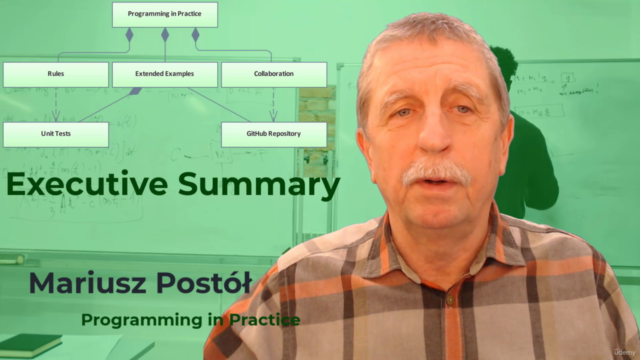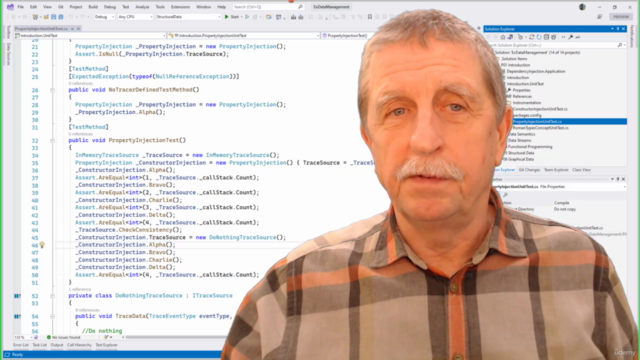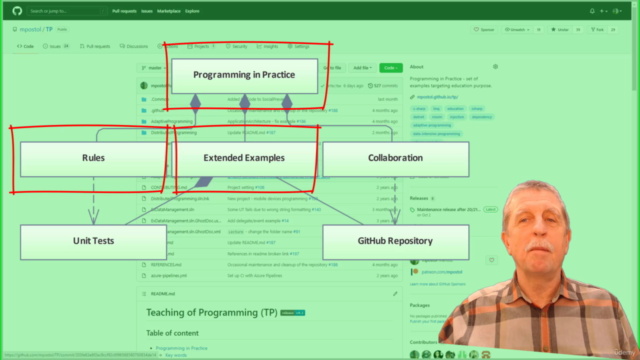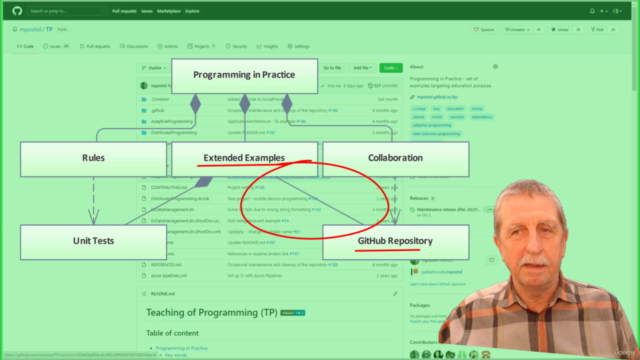Programming in Practice - Executive Summary

Why take this course?
🎓 Course Title: Programming in Practice - Executive Summary
🚀 Course Headline: Master Software Development Skills with Practical, Executable Code Examples
Introduction: In this executive summary of the Programming in Practice educational path, we delve into the heart of computer science—the study of algorithms, computational machines, and computation itself. This field is not only theoretical but also deeply rooted in practical software development. As we journey through the intricacies of programming, you'll discover the importance of understanding not just the theory behind algorithms but also their implementation using a variety of programming languages and tools.
Why Traditional Programming Education Falls Short: Programming can be learned in numerous ways:
-
Theoretical Approach:
- Learn a programming language from scratch, focusing on the theoretical knowledge first.
- While this method improves your understanding of programming concepts, it may not necessarily enhance your practical skills. 📚
-
Snippet-Based Teaching:
- Often presented as solutions to specific problems without context.
- These snippets are usually detached from real-world scenarios and lack reusability due to their tight coupling with specific details. 🎫
-
Full-Featured Programs:
- Contain valuable examples, but may be overloaded with unimportant details that obscure the underlying pattern. 🛠️
The Power of Extended Examples: To overcome these drawbacks, I propose the use of extended examples—code samples that are executable as independent units. These examples allow you to:
- Understand Patterns: By examining patterns in a vacuum, you can focus on what's essential without distractions. 🔍
- Trace Behavior: With the ability to run examples independently, you can observe and analyze their behavior in a controlled environment. 🧪
- Improve Reusability: Extended examples serve as reusable components that can be adapted for different use cases without losing their core functionality. 🚀
The Role of Unit Tests: In this course, unit tests are not just for validation; they're designed with teaching value in mind. They illuminate the behavior of the code and make it easier to understand complex examples. This approach ensures that you can learn from real-world applications without getting bogged down by unnecessary details.
Getting Started with C# and Visual Studio: This course kicks off your journey into programming by introducing you to C# as a robust programming language and MS Visual Studio as an integrated development environment (IDE). Together, they provide a practical context for applying the concepts discussed in this course.
Application Domains of Programming: The code examples in this repository cover several key application domains:
-
External Data-Intensive Programming:
- Manage data from external sources, including streaming, structural, and graphical data. 📊
-
Adaptive Programming:
- Utilize constructs and patterns that enhance the adaptability of your software in production environments. 🔄
-
Distributed Programming:
- Develop applications that are interconnected over a network, focusing on interoperability and communication between different systems. 🌍
Collaboration with GitHub: To facilitate collaboration, the examples are maintained in a public GitHub repository, which supports three forms of engagement:
- Using the Content: You can apply the examples as they are in your own projects.
- Reporting Problems: If you encounter issues or have suggestions, you can contribute by reporting them.
- Active Contribution: Improve the code and share your enhancements with the community. 🤝
License and Community Engagement: With a very permissive license, the code can be used for educational purposes or embedded in commercial applications. The Programming in Practice community is open to researchers, teachers, practitioners, and students who wish to contribute to the future directions of software engineering based on current priorities and community feedback. 🌐
Join the Journey: This course invites you to dive into practical programming with a focus on real-world application and collaboration. Your active participation can help improve and expand the examples, making this repository an invaluable resource for the software development community. Let's embark on this educational adventure together! 🚀
How to Contribute: If you're interested in contributing to the GitHub repository, here are some steps to get started:
- Fork the Repository: Create your own copy of the repository to work on.
- Make Changes: Improve the examples or add new ones based on your knowledge and experience.
- Pull Requests: Submit your changes for review and inclusion in the main project.
- Peer Review: Review others' contributions to maintain the quality of the repository.
- Learn and Grow: Engage with the community, learn from shared experiences, and evolve as a software developer. 🌱
Embark on your programming journey today and become part of the Programming in Practice success story! 🎉
Course Gallery




Loading charts...